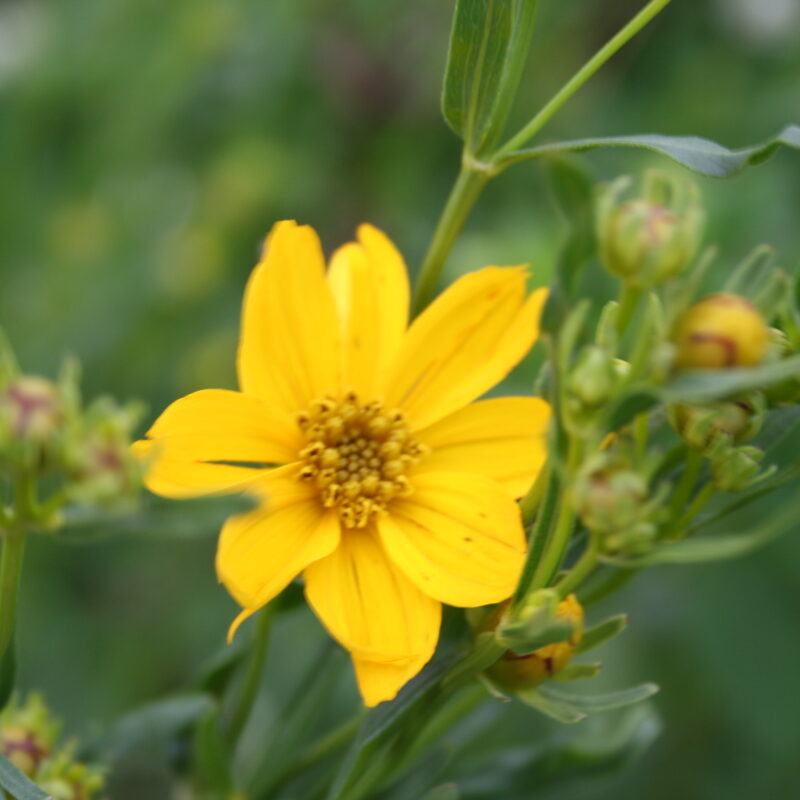Prairie CoreopsisCoreopsis palmata
This coreopsis species performs best on dry soil in full sun, and will bloom continuously if spent flowers are removed. A good species to include in prairies or perennial gardens. In part shade it will not bloom as well. Damper soils will encourage spreading by roots.
USDA symbol: COPA10
General Information
| Plant Type | Forb |
|---|---|
| Height | 2 feet |
| Light Exposure | Sun |
| Soil Moisture | Dry |
| Bloom Color | Yellow |

Tolerances
| Flooding / Inundation Tolerance | Low |
|---|---|
| General Resilience | 7 |
| Salt Tolerance | None |
| Stress Tolerance | Drought Tolerant, Fire Tolerant |
Pollinator Value: Very High
| Bloom Months | June to August |
|---|---|
| Pollinator Benefit | Insect Pollinated, Provides Nectar, Stem Nesting, Supports Generalists |
Project Planning
| Project Type | Boulevard, Rain Garden, Shoreline Buffer |
|---|---|
| Coefficient of Conservatism | 8 |
| Herbivore Sensitivity | Low |
| Lifespan | Perennial |
| Rate of Spread | Medium |
| Soil Stabilization | Shallow |
| Vegetative Reproduction | Clonal |
Range
| County | Anoka, Benton, Blue Earth, Brown, Chippewa, Chisago, Cottonwood, Dakota, Dodge, Douglas, Faribault, Fillmore, Freeborn, Goodhue, Grant, Hennepin, Houston, Isanti, Jackson, Kandiyohi, Lac qui Parle, Lincoln, Lyon, McLeod, Mille Lacs, Morrison, Mower, Murray, Nicollet, Nobles, Olmsted, Otter Tail, Pope, Ramsey, Renville, Rice, Rock, Sherburne, Stearns, Steele, Stevens, Todd, Wabasha, Waseca, Washington, Watonwan, Winona, Wright, Yellow Medicine |
|---|---|
| Ecoregion | Driftless Area, Lake Agassiz Plain, North Central Hardwood Forests, Northern Glaciated Plains, Northern Lakes and Forests, Western Cornbelt Plains |
| Approximate Eco Province | Eastern Broadleaf Forest, Laurentian Mixed Forest, Prairie Parkland, Tallgrass Aspen Parklands |
